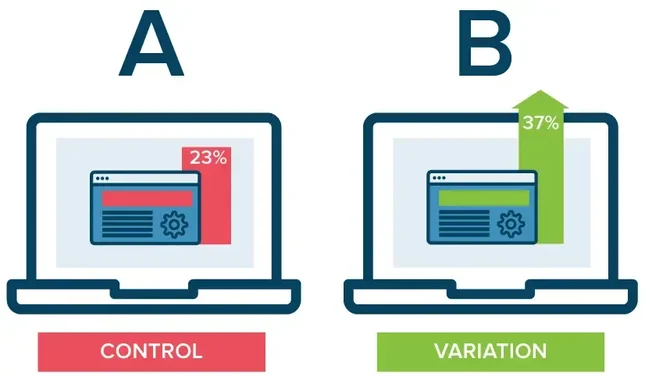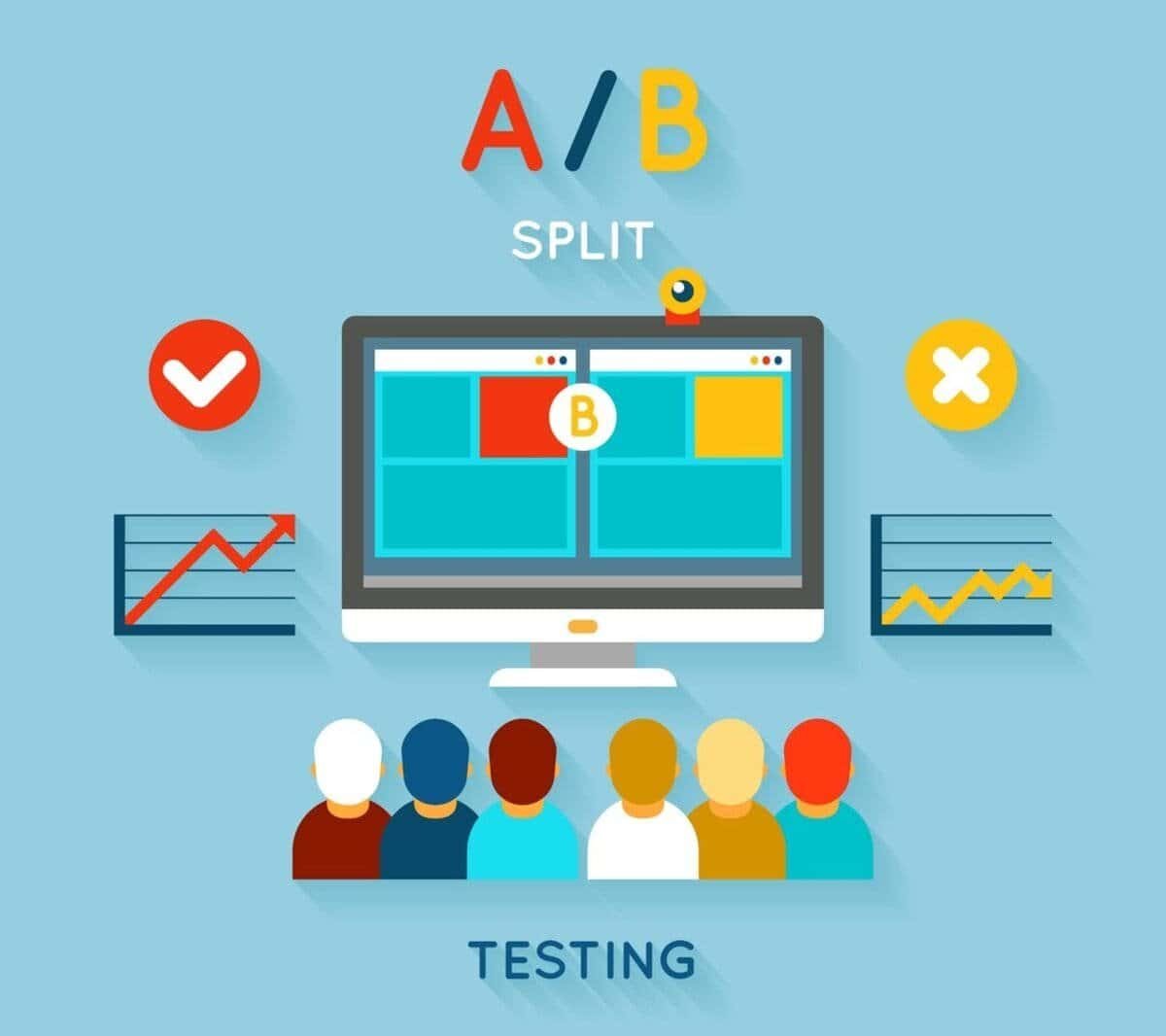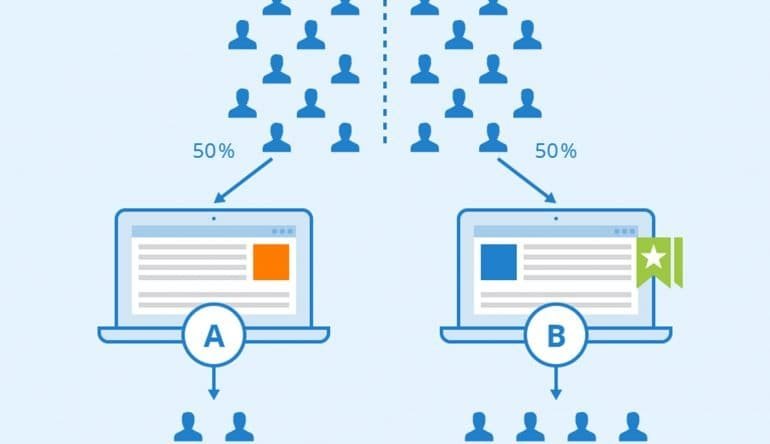A/B testing has come a long way from rudimentary experimentation to a potent strategy that has a severe impact on your marketing outcomes. Testing two versions of a marketing asset against each other can have incredible effects on performance, lifting conversion rates and maximising revenue opportunities. Learn the key components of top A/B testing strategies, going beyond the basics to help you leverage this method to its fullest potential.
The Secret Sauce of A/B Testing in A Online Course: What You Need to Know
Unveiling the Power of A/B Testing
A/B testing is not only a method for comparing two competing versions of a marketing asset for your online course. It’s a nuanced approach to figuring out how users behave and how to improve marketing outcomes. Crucially, this approach relies on isolating variables and measuring their effect on certain metrics, such as conversions, click-through rates, or engagement.
Understanding Advanced Mechanics in A/B Split Testing Your Course
In essential terms, an A/B test is the process of testing out two versions of a marketing asset (we call this the control and the variant) with your audience against a particular metric. For example, if your asset happens to be a landing page, your control may be your current landing page, and your variant could be a new landing page with a new headline or call-to-action. What you are ultimately trying to find out is if there is a difference in performance between the two assets.
Why Advanced A/B Testing Matters
Sophisticated A/B testing lets you hone your marketing efforts down to individual components and investigate them in isolation. Understanding how movement to the right can impact results is crucial to deciding whether to adjust your efforts accordingly—growing the business and improving ROI. If you are serious about keeping up in an environment with an amazing amount of market share up for grabs, finding a way to win out on those incremental advantages is vital.
Mastering the Art of A/B Testing With Your Online Course: Strategies for Success

Cutting-Edge A/B Testing Techniques
Lurking beneath the surface lies a wealth of advanced A/B techniques that can offer tremendous insight to those willing to do the work.
Multivariate Testing: Beyond Simple Comparisons
Multivariate testing, a natural extension of A/B testing, evaluates three or more of those variables together. Rather than comparing two versions of one element against each other (the way an A/B test does), multivariate tests compare multiple permutations of different variables against each other to see how they might span multiple elements to affect performance. For example, if you want to know how the choice of a headline, image, and call-to-action combine to create optimal performance for a piece of content or your site, multivariate testing is your option.
Split URL Testing: Handling Significant Variations
Split URL testing means pitting two very different URLs against each other. With a split URL test, both URLs are totally different in every way, and you use it when you’re making a significant change and want to test that difference against something you already know works. You might be changing your website design and want to test that change against the current site design, which is available at a different URL.
Multipage Testing: Assessing Impact Across Multiple Pages
Multipage testing, which alters elements of a site on several pages, can help you see how the total effect of changes affects an overall user journey. For example, if you want to change the colour of a call-to-action button, you can apply the same change on multiple pages to measure the impact it has on conversion rates throughout the site. You can see how changes to one page impact the entire site.

Avoiding Common Pitfalls in A/B Testing
The Danger of Testing Too Many Variables
The biggest trap is If you change more than one variable when doing an A/B test, it’s hard to discern what caused the changes in performance. That’s why, when testing an element, make it as possible as possible to test one variable at a time. This makes it easier to see the effect of the element you’re changing.
Relying on Automatic Ad Rotations
Today, most ad platforms, like Facebook or Google Ads, also automatically perform ‘ad rotations’ aimed at improving performance. These rotations can skew results when you’re performing manual A/B tests, so be aware. If you want more control over your tests, consider manual rotations or dedicated ad groups.
Testing Based on Guesswork
You should have a data point, a quantified reason, for thinking one option will perform better than the other. An example of a good test for this is going into your analytics platform and using heatmaps and session recordings of the current site to see where things are going well and poorly.
The Art of Crafting Effective A/B Tests
Setting Clear Objectives and Hypotheses
In order to run this A/B test for your online course, you’d want to define a goal and assign a hypothesis, or a specific prediction based upon your goal. Let’s say your goal is to increase your email open rate, and you wanted to write different subject lines for your email and test which subject line performs the best for open rates. If you don’t have a clear hypothesis in your mind, you can have a scattershot approach to creating variations, testing largely inefficient things, and never truly understanding why something worked or didn’t.
Measuring Success and Statistical Significance
Once your A/B tests have accumulated enough data (a process that can take weeks or even months), you will need to figure out whether your test results are truly statistically significant. Did you actually discover that one landing page outperforms another, or was it just a result of random fluctuations? You can base your decision on a statistical significance calculator (there are many freely available online.
Leveraging Tools and Platforms
Essential A/B Testing Tools
Several tools—and even platforms—help ease this A/B testing as well as draw conclusions:
Optimizely: is a leading experimentation platform that offers comprehensive A/B testing and multivariate testing capabilities.
VWO: A suite of testing options at your fingertips so you can test with A/B, multivariate, as well as split URL.
Google Optimize: Departing, but was previously a go-to for AB testing (alternatives: VWO).
Integrating A/B Testing with Your Marketing Stack
Make sure that any A/B testing tools you choose play nicely with your marketing stack—e.g., CRM systems, email marketing platforms, and analytics tools—so that the process is fully integrated and the data is integrated across the whole stack.

Advanced Applications: Using A/B Testing for Brand Positioning
Testing Messaging and Brand Positioning
A/B testing your online course can be applied not only to tactical elements but also to developing the messaging or brand positioning. Running versions of an ad of your online course with different types of hooks can help you understand which messaging is resonating best with your target audience. By analyzing the performance of various hooks, you can gain valuable insights into the preferences and motivations of your audience, allowing for more tailored marketing strategies. Implementing different online course marketing techniques, such as email campaigns or social media promotions, can further enhance your understanding of what appeals most to your potential students. This iterative approach ensures that your messaging evolves along with your audience’s needs, maximizing engagement and conversion rates.
Enhancing User Experience Through A/B Testing
Consider using A/B testing to discover experience gaps in your customer journey (or funnel) and to alter the structure of your site or app in order to enhance incremental experience and results by experimenting with the elements of design.
Conclusion
A/B testing your online course can turbocharge your marketing approach to yield rich dividends. Just remember that it’s an organic process that requires the best technique; dodge the traps that common practitioners overlook; and use the right tools to yield the right data. As you experiment and refine your approach, you’re far better placed to make marketing decisions with hard facts and numbers.
Want to keep digging? Get more information, keep an eye on trends, and keep testing to stay on top of your game. A/B testing is a daily voyage of discovery, and it always helps to have a great guide along.

